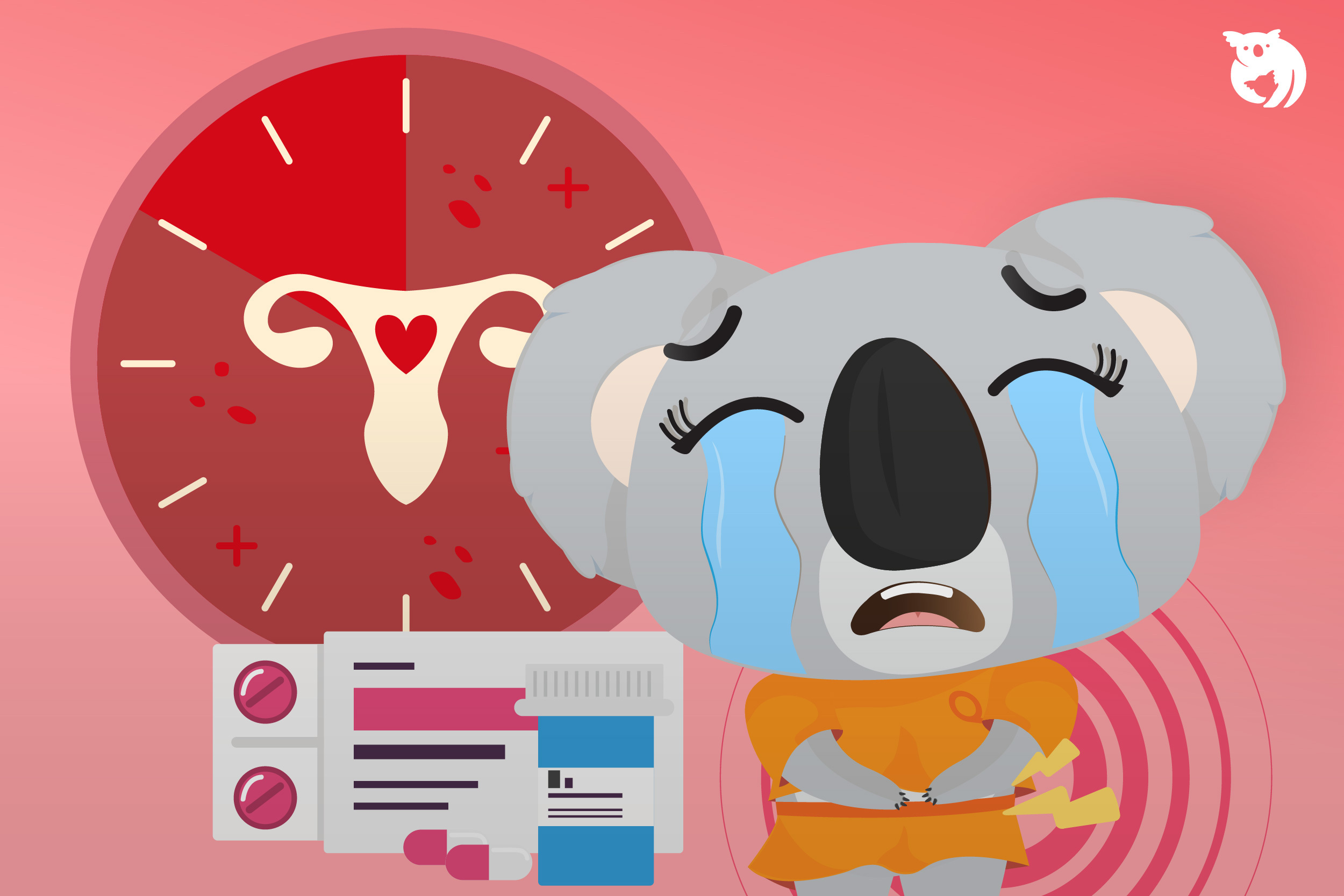Severe menstrual cramps are often experienced by many women. It is certainly a nightmare experienced every month. Severe menstrual cramps can affect daily activities. Some have to take medical leave due to severe menstrual cramps that are so bad they cannot get out of bed.
Reasons Why Women Experience Severe Menstrual Cramps
Excessive hormone production can cause the uterus to contract excessively, causing pain not only in the lower abdomen but also in the lower back. In most cases, severe cramps may be caused by more serious conditions such as bacterial infections, endometriosis, and fibroids that can be detected when a woman experiences excessive cramps every month, forcing her to take several days off work because she is unable to perform her duties.
While we know that severe cramps can occur due to contractions in the uterus before or during the onset of menstrual periods, some individuals may experience severe cramps due to:
- Having a smoking habit;
- Experiencing heavy menstrual bleeding;
- Never been pregnant;
- Reaching puberty before the age of 11.
Additionally, severe menstrual cramps can also be caused by medical conditions such as the following:
1. Premenstrual Syndrome (PMS)
Premenstrual syndrome or PMS is a condition that is caused by hormonal changes in the body that occur one to two weeks before menstruation begins. The symptoms usually disappear after the onset of bleeding.
2. Endometriosis
Endometriosis is a medical condition that occurs when cells from the lining of the uterus grow in other parts of the body, such as the fallopian tubes, ovaries, or pelvic lining.
3. Fibroids in the Uterus
Fibroids are non-cancerous tumors that put pressure on the uterus or cause painful and abnormal menstruation, although they usually do not cause any symptoms.
4. Pelvic Inflammatory Disease (PID)
PID is an infection of the uterus, fallopian tubes, or ovaries caused by bacteria from the vagina that leads to inflammation in the reproductive organs and pain.
5. Adenomyosis
This rare condition involves tissue that normally lines the uterus growing into the walls of the uterine muscle, causing inflammation, pressure, and pain. It also causes longer and heavier menstrual cycles.
6. Cervical Stenosis
This is also a rare condition in which the cervix narrows or becomes constricted, slowing down menstrual flow. This then leads to increased pressure in the uterus, causing severe menstrual cramps.
Menstrual Cramps Symptoms
To your information, menstrual cramps involve a throbbing pain accompanied by cramping in the lower abdomen. This pain can spread to the back and thighs.
Menstrual cramps can occur one or two days before the start of menstruation and peak within the first 24 hours after the arrival of menstrual blood. In addition, menstrual cramps can last for up to two to three days. Menstrual cramps can also be accompanied by other symptoms such as:
- Nausea;
- Fatigue;
- Headaches;
- Dizziness.
How to Reduce Severe Menstrual Cramps
These are some ways and tips to reduce severe menstrual cramps that can be tried at home:
1. Heat Compression
This is the most commonly used method. It is easy, just place a hot pad or a bottle filled with hot water (wrapped in a small towel) on the back to reduce the pain.
This method can also help relax the pelvic muscles, thereby relieving the pain. Hot pads are now readily available at stores like Watson, Guardian, and many others. Keep the heating pad in this bag for emergency days.
2. Painkillers
Painkillers or nonsteroidal anti-inflammatory drugs (NSAIDs) are effective in reducing pain and inflammation. These drugs can be bought over-the-counter at pharmacies, or you can get them with a prescription from a doctor.
A clinical study found that painkillers were very effective in reducing severe menstrual pain. It also showed better results compared to aspirin.
However, it is recommended that you seek advice from a healthcare professional before using any type of painkiller.
3. Do Light Exercise to Reduce Severe Menstrual Pain
Observations and health studies show that women who engage in light exercise benefit from relief from menstrual pain.
Light exercises such as yoga have been proven to provide a significant reduction in pain levels during menstruation compared to those who do not exercise.
Types of Exercise You Can Do
The first day of menstruation is a dreaded day for many women. This is because some may experience severe menstrual cramps. Therefore, here are some low-intensity exercise activity ideas that can be practiced during menstruation:
-
- Walking or light cardio;
- Yoga
4. Healthy Diet
You are also advised to follow a healthy diet by increasing your water intake, consuming fruits and vegetables along with other anti-inflammatory foods to reduce inflammation and relieve severe menstrual cramps. Avoid eating spicy foods and carbonated drinks.
Back Pain During Menstruation: What Are the Causes?
In addition to cramps, back pain can also occur during menstruation. This back pain is considered “normal” and occurs due to hormonal changes.
Prostaglandins (hormones produced during the menstrual cycle to promote the contraction of the uterus to shed the uterine lining) can affect the lower back muscles.
Excessive production of prostaglandins can cause severe cramps or painful menstruation. The heavy contractions then push the pain to the back. This back pain can also radiate from the lower abdomen to the lower hips.
Severe Menstrual Cramps: Does It Damage the Reproductive System?
Severe menstrual cramps can disrupt a woman’s daily routine, whether she is still studying or already working. Sometimes, they have to take medical leave due to the unbearable pain. Many women tend to ignore severe menstrual cramps that occur almost every month. However, this habit is actually dangerous.
If you experience prolonged severe menstrual cramps, it is highly recommended that you seek a thorough examination by a doctor immediately. The purpose is to ensure that you are not suffering from a more serious condition, which is endometriosis.
Studies report that nearly 1 in 7 women aged between 30 and 45 suffer from endometriosis. Endometriosis is a condition that arises from the growth of some layers of uterine tissue in other parts of the body.
What Is Endometriosis?
Endometriosis can be found in areas such as the pelvis, including the intestines, bladder, and reproductive organs. Additionally, it is often found in the ovaries and the posterior ligament that supports the uterus.
If left untreated, endometriosis can lead to difficulty in getting pregnant and can cause pain during sexual intercourse. The exact cause of endometriosis is still unclear, according to studies.
The commonly concluded theory refers to retrograde menstruation or the backward flow of menstrual blood where some of the blood flows backward towards the peritoneal opening through the fallopian tubes. Here are the signs of endometriosis that you need to know:
- The painful menstrual cramps;
- Pain during sexual intercourse;
- Heavy and irregular menstruation;
- Pain in the pelvis and lower abdomen.
Endometriosis is usually detected after a doctor examines the medical history and performs further examination on the pelvis. In addition, laparoscopic surgery, which uses a special tool to detect tissue in the pelvis, can also provide an accurate diagnosis.
Endometriosis Treatments
The treatment given to endometriosis patients aims to reduce the levels of estrogen and progesterone in women, which function to stimulate the growth of endometriosis. Here are some types of endometriosis treatments:
-
- Hormonal medication such as high-dose progesterone, oral contraceptive pills, and synthetic male hormones (danazol);
- GnRH analog, which is a gonadotropin-releasing hormone: injections taken every month or every 3 months to control estrogen production by inducing menopause;
- Surgery: either laparoscopy or regular surgery;
- Ablation: removal of the uterus and sometimes the ovaries to alleviate severe pain after other treatment methods have failed.
All these types of treatments are given based on the stage of the disease, the needs, and the priorities of the individual. Usually, this disease can be treated well at an early stage.
If you have abnormal menstrual cramps, it is best to consult a doctor immediately!
Additionally, if you’re looking to get the best health insurance, visit the Qoala website for more information. Qoala provides a range of medical and health insurance products from several of the best and most popular insurance companies in Malaysia, with a guarantee of an easy, fast, and secure process.

 EN
EN
 MY
MY








